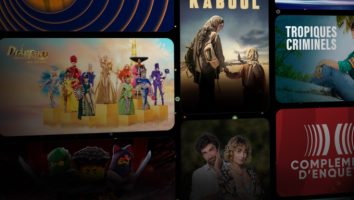When ‘convergence’ launched onto the new media scene as a buzzword many moons ago, excited pundits predicted that the imminent integration of TV and the web would change the world of broadcasting forever. Fast forward to 2001, and we’re not quite there yet. The tech geeks are still working on implementing a convergence standard and mapping out a viable distribution model, and the revolution has been so long in the making that everyone’s eyes now glaze over at the mere mention of the word convergence.
The good news is that the delay has given us time to get over the initial goldrush mentality that made everyone rifle madly through their portfolios to find something (dear God, anything!) that could be shopped around as a convergence project. Surely you all remember the pitches from those dark days-they went a little something like this: ‘Well, see…the protagonist is a computer chip, and…um…we’re going to have a website!’
With the recognition that the integration of TV and the web is still a ways off, the mass paranoia about being left behind in a stampede towards a virgin profit opportunity has dissipated somewhat. Folks have started to think more carefully about new approaches to property development that make the most of interactivity in both media-and it’s leading to really good things.
One new tack focuses on using a common narrative to drive eyeballs back and forth between a concept’s web and TV incarnations. As part of last summer’s Toonami Total Immersion event, Cartoon Network ran a serialized TV soap and continued the story line on the web with an alternate-ending comic book and a multi-player adventure game that could only be accessed using passwords revealed on the tube. Can you say synergy? The strategy worked well with kid viewers, who are already accustomed to jumping from medium to medium to get their entertainment fixes. The event increased TV ratings by 50% and web hits by 72%, and the channel is planning to revisit the initiative for back-to-school this year (see ‘Taking stock of animation tech,’ page 35).
Another development has indie production companies like New York-based Visionary Media (WhirlGirl) and Halifax, Canada’s Collideascope Digital Productions (Ollie’s Under the Bed Adventure) starting to use web animation tools like Flash to render the TV components of their convergence projects. Whereas studios often shop out the rendering work on cel-animated projects, all of the tooning can be done in-house on a Flash series. This scenario not only helps keep costs down (to around US$200,000 per half hour), but the tighter creative collaboration it breeds also opens up the door to last-minute scene tinkering and joke and gag add-ons, which makes the content fresher.
And fresh content is always the key, no matter what medium you’re working in. As we head towards this next evolution in kids entertainment delivery, everyone needs to remember that the rules of the game are the same. Interactivity makes the kid connection, but content is still paramount to longevity.
Musical chairs: In staff news, KidScreen’s animation-savvy West Coast Bureau Chief Jerry Beck has moved on to focus on several cool projects that he’s had brewing for a while, including an animation book project and a series in development at MTV. Jerry’s industry knowledge and editorial flare will be sorely missed, but serendipitously, one of our own has stepped up to take over in L.A. Mike Connell, who has been working tirelessly out of the Toronto office as KidScreen’s Staff Writer and Copy Chief for the last year, has packed up his gear and moved south to fill the position. Mike’s nose for news, gift for gab and passion for anime and comic books make him a great fit for the job. Cynthia Reynolds has also joined the KidScreen crew as Copy Chief, dedicated to steering us ably through the minefield that is magazine production.





















